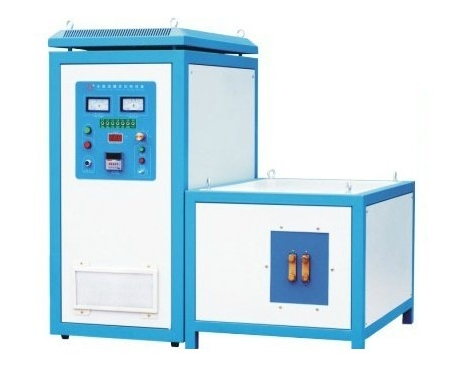- 28
- Feb
Procesní aplikace vysokofrekvenčního kalícího zařízení na pístní čepy automobilových motorů
Process Application of Vysokofrekvenční kalení Zařízení na pístních čepech automobilových motorů
Piston Pin (English name: Piston Pin) is a cylindrical pin mounted on the piston skirt. Its middle part passes through the small head hole of the connecting rod to connect the piston and the connecting rod and transmit the gas force that the piston bears to link. In order to reduce weight, piston pins are generally made of high-quality alloy steel and made hollow. The structural shape of the plug pin is very simple, basically a thick-walled hollow cylinder. The inner hole has cylindrical shape, two-section truncated cone shape and combined shape. Cylindrical holes are easy to process, but the mass of the piston pin is larger; the mass of the piston pin of the two-section truncated cone hole is smaller, and because the bending moment of the piston pin is the largest in the middle, it is close to the beam of equal strength, but it is tapered. Hole processing is difficult. In this design, a piston pin with an original inner hole is selected.
provozní podmínky:
(1) Při vysokých teplotách odolá silnému periodickému nárazu, ohýbání a střihu
(2) Povrch čepu nese větší tření a opotřebení.
1. Režim poruchy: v důsledku periodického namáhání dochází k únavovému lomu a silnému opotřebení povrchu.
Požadavky na výkon:
2. Pístní čep snáší velké periodické rázové zatížení za podmínek vysoké teploty, a protože se pístní čep v otvoru čepu otáčí pod malým úhlem, je obtížné vytvořit film mazacího oleje, takže podmínky mazání jsou špatné. Z tohoto důvodu musí mít pístní čep dostatečnou tuhost, pevnost a odolnost proti opotřebení a hmotnost by měla být co nejmenší. Kolík a otvor pro kolík by měly mít vhodnou vůli a dobrou kvalitu povrchu. Za normálních okolností je zvláště důležitá tuhost pístního čepu. Pokud je pístní čep ohnutý a deformovaný, může dojít k poškození sedla pístního čepu;
(2) má dostatečnou rázovou houževnatost;
(3) Má vysokou únavovou pevnost.
3. Technické požadavky
Technické požadavky na pístní čep:
①Celý povrch pístního čepu je nauhličený a hloubka nauhličované vrstvy je 0.8 ~ 1.2 mm. Nauhličená vrstva by měla rovnoměrně přecházet do struktury jádra bez náhlých změn.
②Tvrdost povrchu je 58-64 HRC a rozdíl tvrdosti na stejném pístním čepu by měl být ≤3 HRC.
③Tvrdost jádra pístního čepu je 24 až 40 HRC.
④ Mikrostruktura nauhličované vrstvy pístního čepu by měla být jemným jehlovým martenzitem, umožňujícím malé množství rovnoměrně rozložených jemných granulovaných karbidů a žádnou jehlovou a souvislou síťovitou distribuci volných karbidů. Tvar jádra jádra by měl být nízkouhlíkový martenzit a ferit.
In response to the above requirements and needs, reasonable technology and equipment are needed. After carburizing, the carburized steel piston pin is quenched and tempered at low temperature. Piston pins with higher performance requirements are treated by secondary quenching and tempering. The purpose of the first quenching is to eliminate the network cementite in the cemented layer and refine the core structure; the second quenching is to refine the infiltration Layer organization and make the permeable layer get high hardness. Piston pins with higher alloying elements should undergo cryogenic treatment after carburizing and quenching to reduce the amount of retained austenite in the carburized layer, especially piston pins that require dimensional stability, and cryogenic treatment is required to control retained austenite quantity.

